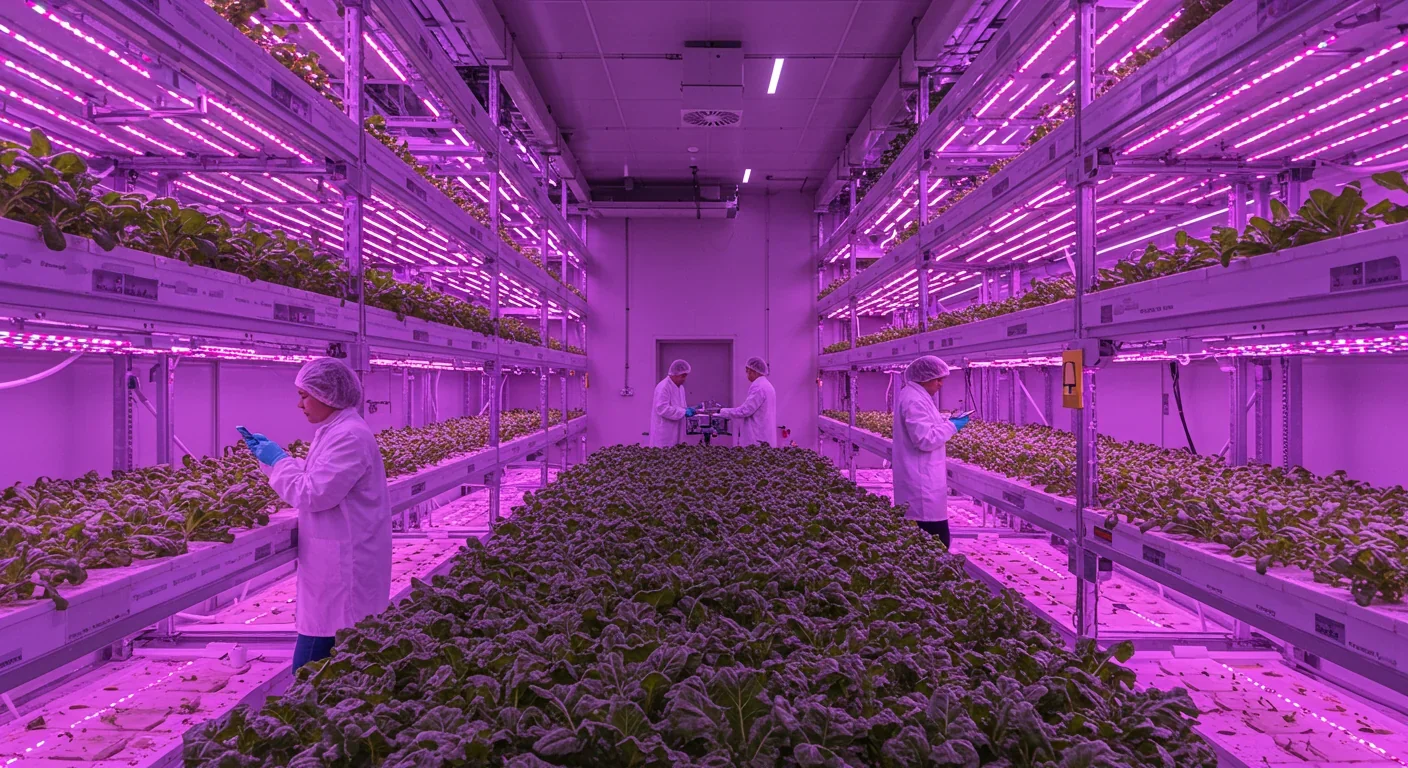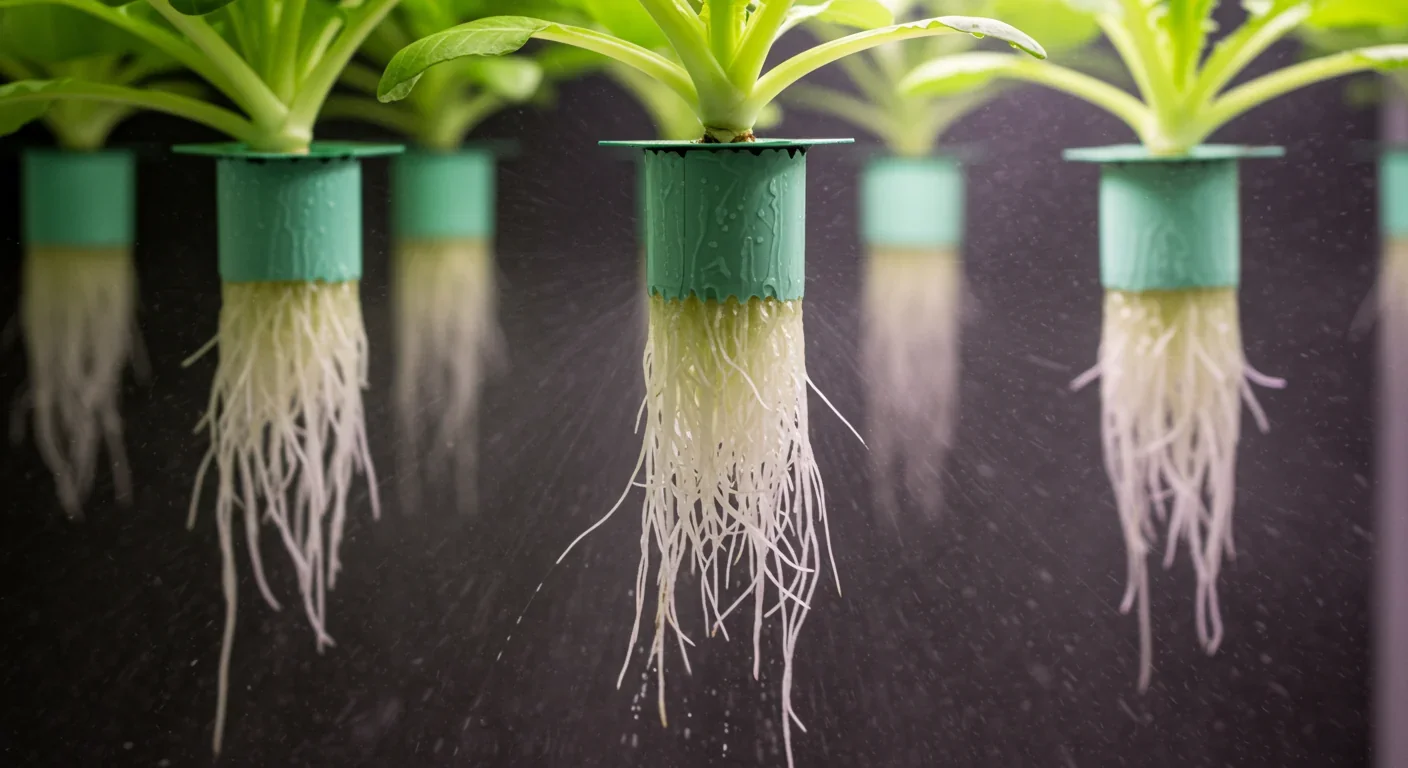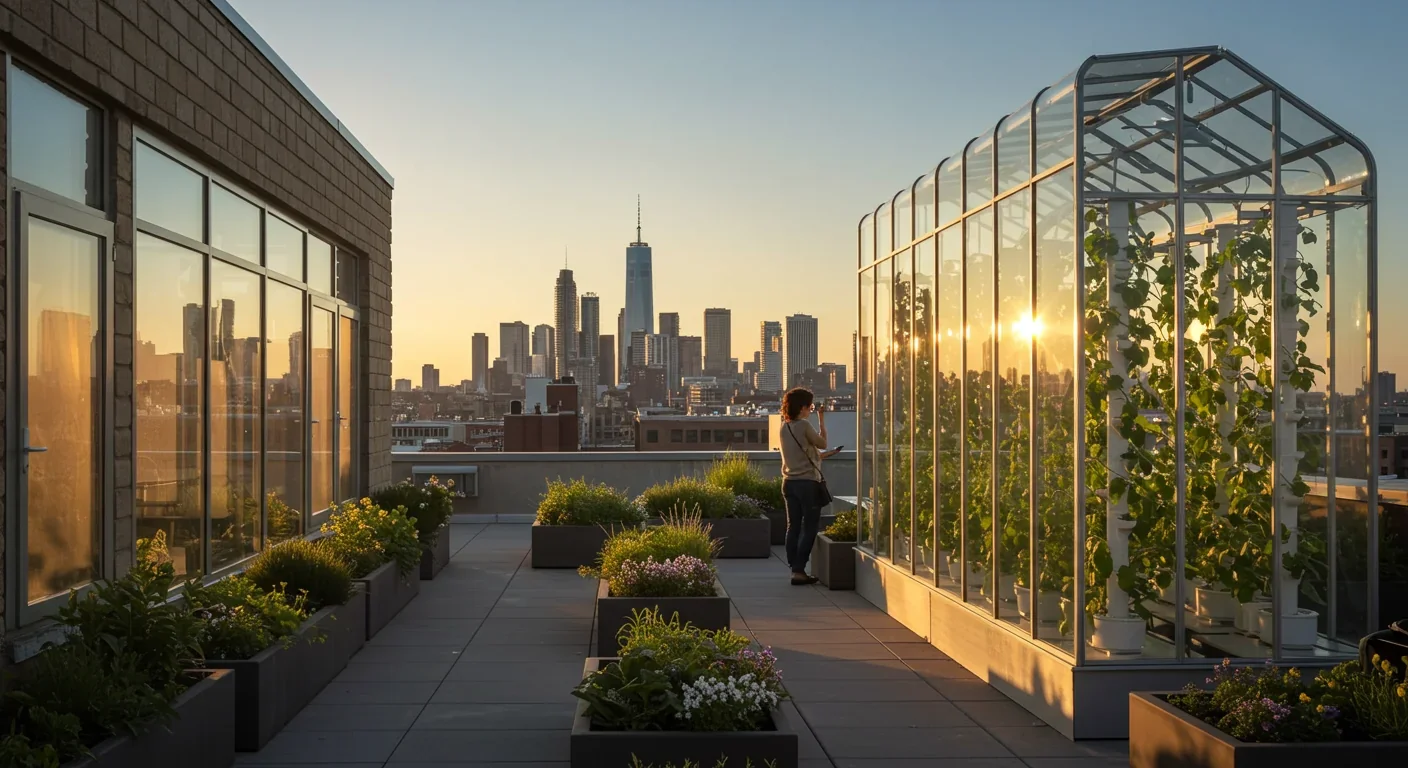Digital Pollution Tax: Can It Save Data Centers?

TL;DR: Vertical farms in skyscrapers produce 20x more food per square meter than traditional fields while using 90% less water, but they still emit more greenhouse gases due to energy demands—making them a powerful yet imperfect solution for urban food security.

Picture this: by 2050, nearly 70% of Earth's population will live in cities. Where will they get their lettuce? Their tomatoes? Their kale? The answer might be growing 30 stories above their heads. Vertical farms built inside skyscrapers and warehouses aren't just futuristic concepts anymore—they're producing millions of pounds of food right now, and they're doing it with a fraction of the water and land that traditional agriculture requires. But here's the twist nobody saw coming: these high-tech farms might actually have a bigger carbon footprint than dirt.
Vertical farming sounds simple: stack plants on shelves, add lights, and watch them grow. Reality is way more complex. These operations use hydroponic or aeroponic systems where roots either dangle in nutrient-rich water or get misted with it. No soil needed. LED lights tuned to specific wavelengths replace the sun, delivering exactly the spectrum plants crave. Sensors monitor everything from pH levels to humidity, feeding data to AI systems that adjust nutrients in real time.
Companies like Eden Green Technology have achieved 90% less light energy consumption than typical vertical farms while producing 2,500 tons of leafy greens annually. Their Texas facility runs 24/7/365 with a 28-day harvest cycle. The precision is staggering—temperature, humidity, CO₂ concentration, even airflow patterns are controlled down to decimal points.
The real magic happens when you stack these systems vertically. A Green Spirit Farms facility in Scranton, Pennsylvania covers just 3.25 hectares but uses racks stacked six high, housing 17 million plants. That's agricultural density traditional farming can't touch.
Some operations go even weirder. Abandoned mine shafts are being converted into "deep farms" that exploit consistent underground temperatures and natural groundwater access. Others retrofit shipping containers, creating modular farms that can be dropped anywhere from Dubai rooftops to Brooklyn parking lots.
Humans have been trying to cheat geography for millennia. The Hanging Gardens of Babylon were basically ancient vertical farms. Victorian greenhouses let British aristocrats grow pineapples in winter. But modern vertical farming traces its roots to 1999, when Columbia University professor Dickson Despommier challenged his students to design urban farms capable of feeding Manhattan. They calculated you'd need about 100 acres of rooftop space per city block. Ambitious, but not crazy.
The real breakthrough came with LED technology. As bulbs got more efficient and cheaper through the 2000s, the economics shifted. By 2018, commercial LEDs hit 28% efficiency, making year-round indoor growing remotely feasible. Japan led the charge after the 2011 tsunami contaminated farmland, forcing innovation. Singapore, with limited arable land, quickly followed.
Early vertical farms failed spectacularly. Plenty closed their doors after burning through millions. The survivors learned hard lessons: grow what people actually want to buy, keep costs under control, solve real supply chain problems instead of chasing futuristic hype. Companies like 80 Acres Farms survived by acquiring struggling competitors and consolidating operations, recently securing $115 million in new funding.
The numbers are almost absurd. A University of Surrey study found vertical farms produced around 97 kilograms of lettuce per square meter—more than 20 times the 3.3 kg/m² from conventional fields. Some operations claim over ten times the crop yield with specialized LED setups. When you're in a city where real estate costs thousands per square foot, that density makes sense.
Water efficiency is even more dramatic. Traditional farming in hot climates can use up to 7.3 cubic meters of water per kilogram of lettuce. Vertical systems use 0.9 m³/kg—sometimes as little as 2-3% of conventional methods because they capture and recycle evaporated water through air conditioning systems.
Pesticides? Unnecessary. When you control the environment completely, pests can't get in. BrightFarms grows baby greens using only seeds, water, and light—no chemical sprays, no chlorine baths, nothing you can't pronounce.

Here's where it gets interesting for anyone who eats food. Eden Green promises produce on store shelves within 48 hours of harvest. Compare that to California lettuce trucked cross-country, losing nutrients and freshness for days before reaching you. Those "food miles" add up: Eden Green reports 85% fewer food miles than traditional methods.
Cities gain food security. When hurricanes, droughts, or supply chain meltdowns hit, vertical farms keep producing. During COVID lockdowns, Farm.One in New York continued delivering weekly subscription boxes by bicycle to Tribeca and Brooklyn customers while traditional supply chains buckled.
Labor dynamics shift too. iFarm estimates vertical farms operate with 30% lower labor costs than traditional farms, though they require different skills—monitoring systems, troubleshooting tech, managing data rather than driving tractors. Some operations donate up to 10% of harvests to local nonprofits fighting hunger, embedding community benefit directly into their business model.
Now for the plot twist researchers didn't expect. That University of Surrey study measured something nobody had quantified before: carbon emissions per kilogram of produce. Vertical farms emitted 0.93 kg of greenhouse gases per kg of lettuce. UK field farms? 0.57 kg/kg. Even when powered entirely by renewable electricity, vertical operations still emitted more because of the sheer energy required to run lights, climate control, and nutrient circulation 24/7.
Think about that. You save massive amounts of water. You eliminate pesticides. You cut transportation emissions. And you still might be worse for the climate.
Startup costs are brutal. Building a commercial vertical farm requires millions in capital for real estate, equipment, automation systems, and expertise. 80 Acres Farms needed $115 million just to expand existing operations. That's why so many early ventures collapsed—they ran out of runway before reaching profitability.
You can't grow everything vertically either. Leafy greens and herbs work great. Tomatoes and peppers are possible. But wheat? Corn? Forget it. The economics don't pencil out for calorie-dense staple crops. Vertical farming addresses fresh produce and specialty items, not global food security in any complete sense.
Regulatory barriers vary wildly by location. Some cities embrace urban agriculture with tax incentives and expedited permits. Others bury applications under red tape designed for traditional farms that doesn't fit indoor operations. Singapore actively promotes vertical farming as strategic infrastructure. American cities are slower to adapt.
Despite the challenges, the advantages are undeniable for specific applications. Year-round production means consistent supply and pricing for retailers—no more paying premium prices for lettuce during winter or dealing with shortages after floods. Quality stays remarkably consistent because variables are controlled.
Urban locations mean fresher produce and shorter cold chains. Less refrigeration translates to lower energy in distribution, even if more energy goes into production. The difference between a 5-day supply chain and a 48-hour one matters for both nutrition and waste reduction.
Vertical farms can locate near specific buyers. A facility can partner directly with grocery chains, restaurants, or institutional buyers, customizing what they grow to match demand. That flexibility is impossible with conventional farming, where you plant in spring and hope someone wants to buy in fall.
Climate independence is probably the biggest win. Droughts, floods, heat waves, freezes—none of it matters when you're inside a controlled environment. As climate change makes traditional agriculture more volatile, that stability becomes valuable.

Different countries are betting on vertical farming for different reasons. Singapore faces an existential issue: 90% of their food is imported. Vertical farms aren't optional—they're strategic infrastructure to reduce vulnerability. The government actively funds research and offers subsidies for commercial operations.
Japan embraced the technology after Fukushima contaminated farmland, but now sees it as a solution for rural depopulation and aging farmers. Automated vertical farms don't need young workers willing to wake up at dawn.
The Middle East approaches it through a water scarcity lens. Dubai and Abu Dhabi invest heavily in vertical farms because importing food from thousands of miles away is unsustainable long-term when regional water supplies are depleting.
Europe is more cautious. The UK's research emphasizes understanding environmental trade-offs before scaling up. Scandinavian countries experiment with integrating farms into building heating systems, using waste heat from other processes.
China operates some of the world's largest vertical operations, viewing them as tools for feeding megacities while reducing agricultural pressure on diminishing arable land. The government classifies certain facilities as critical infrastructure.
Integration with smart cities represents the next frontier. Imagine vertical farms built into office towers and apartment buildings, using waste heat from data centers to reduce energy costs. Wastewater from the farm feeds back into building greywater systems. It stops being "agriculture" and becomes part of urban metabolism.
AI will push efficiency further. Current systems monitor and adjust; future ones will predict optimal harvest times, identify diseases before human eyes can spot symptoms, and dynamically adjust growing parameters based on market demand and energy pricing.
Blockchain traceability is arriving fast. Scan a QR code on your lettuce and see exactly which shelf it grew on, what nutrients it received, when it was harvested, and how it got to the store. That transparency builds consumer trust and helps track foodborne illness to specific batches within hours instead of weeks.
Genetic optimization specifically for vertical environments is starting. Why grow crops bred for field conditions when you can develop varieties optimized for LED spectrums, dense spacing, and controlled climates? That could dramatically improve both yield and nutrition.
The real question isn't whether vertical farming will grow—it's already growing. The question is whether the technology will evolve fast enough to solve its energy problem before climate concerns kill momentum. If LED efficiency keeps improving, if renewable energy gets cheaper, if waste heat integration becomes standard, the carbon equation changes completely.
For urban planners, the message is clear: start thinking about how to zone for agricultural uses in unexpected places. Rooftops, basements, retrofitted warehouses—they're all farmland now. Building codes need to catch up.
Investors should watch the consolidation trend. Early-stage vertical farm startups have mostly failed. The winners will be companies focused on solving specific problems—local supply for specific markets, specialized crops, integration with larger food systems—rather than trying to revolutionize all of agriculture overnight.
For anyone interested in the field professionally, skills matter more than background. Understanding controlled environment agriculture, automation systems, data analysis, and supply chain logistics beats traditional farming experience. Several universities now offer degrees in controlled environment agriculture.
Consumers can vote with dollars. Local vertical farms need customers willing to pay slightly more for dramatically fresher produce. That market signal determines whether operations succeed or fold.
The next decade will reveal whether vertical farming is a niche solution for leafy greens in wealthy cities or the first chapter of a larger transformation in how humanity feeds itself. The technology works. The business models are improving. The environmental equation remains complicated. What's certain is that growing food in the same buildings where people live and work is no longer science fiction—it's Tuesday's lunch.

Recent breakthroughs in fusion technology—including 351,000-gauss magnetic fields, AI-driven plasma diagnostics, and net energy gain at the National Ignition Facility—are transforming fusion propulsion from science fiction to engineering frontier. Scientists now have a realistic pathway to accelerate spacecraft to 10% of light speed, enabling a 43-year journey to Alpha Centauri. While challenges remain in miniaturization, neutron management, and sustained operation, the physics barriers have ...

Epigenetic clocks measure DNA methylation patterns to calculate biological age, which predicts disease risk up to 30 years before symptoms appear. Landmark studies show that accelerated epigenetic aging forecasts cardiovascular disease, diabetes, and neurodegeneration with remarkable accuracy. Lifestyle interventions—Mediterranean diet, structured exercise, quality sleep, stress management—can measurably reverse biological aging, reducing epigenetic age by 1-2 years within months. Commercial ...

Data centers consumed 415 terawatt-hours of electricity in 2024 and will nearly double that by 2030, driven by AI's insatiable energy appetite. Despite tech giants' renewable pledges, actual emissions are up to 662% higher than reported due to accounting loopholes. A digital pollution tax—similar to Europe's carbon border tariff—could finally force the industry to invest in efficiency technologies like liquid cooling, waste heat recovery, and time-matched renewable power, transforming volunta...

Humans are hardwired to see invisible agents—gods, ghosts, conspiracies—thanks to the Hyperactive Agency Detection Device (HADD), an evolutionary survival mechanism that favored false alarms over fatal misses. This cognitive bias, rooted in brain regions like the temporoparietal junction and medial prefrontal cortex, generates religious beliefs, animistic worldviews, and conspiracy theories across all cultures. Understanding HADD doesn't eliminate belief, but it helps us recognize when our pa...

The bombardier beetle has perfected a chemical defense system that human engineers are still trying to replicate: a two-chamber micro-combustion engine that mixes hydroquinone and hydrogen peroxide to create explosive 100°C sprays at up to 500 pulses per second, aimed with 270-degree precision. This tiny insect's biochemical marvel is inspiring revolutionary technologies in aerospace propulsion, pharmaceutical delivery, and fire suppression. By 2030, beetle-inspired systems could position sat...

The U.S. faces a catastrophic care worker shortage driven by poverty-level wages, overwhelming burnout, and systemic undervaluation. With 99% of nursing homes hiring and 9.7 million openings projected by 2034, the crisis threatens patient safety, family stability, and economic productivity. Evidence-based solutions—wage reforms, streamlined training, technology integration, and policy enforcement—exist and work, but require sustained political will and cultural recognition that caregiving is ...

Every major AI model was trained on copyrighted text scraped without permission, triggering billion-dollar lawsuits and forcing a reckoning between innovation and creator rights. The future depends on finding balance between transformative AI development and fair compensation for the people whose work fuels it.